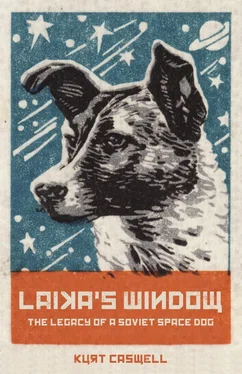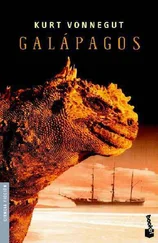In the West, too, Laika lived large in the public imagination. For many, she was proof that the Soviet Union now possessed the power to destroy the United States, or any other country for that matter, from space. And she was a symbol of Soviet godlessness, a cruel sacrifice to the technological advance of a state fallen from God’s grace. The scientific achievement of the Soviet Union became lost in the story of Laika herself, as a global debate broke out about the ethical use of animals in research, fueled primarily by anti-Soviet propaganda from the National Canine Defense League (now Dogs Trust) and the Royal Society for the Prevention of Cruelty to Animals, both in the United Kingdom. Other animal rights organizations joined in to encourage protests at Soviet embassies worldwide. No matter that, worldwide and in the West where these protests originated, animals were likewise being used in medical and scientific research. To keep pace with the Soviets, the US military was sending not dogs but monkeys, and eventually chimpanzees, into space in experimental rockets, many of which crashed and burned up on the desert plains of eastern New Mexico. But most people do not care about monkeys and chimps the way they care about dogs, and so Laika—a stray dog in a rocket ship, dead and exiled, orbiting the Earth for months—became a symbol of the USSR’s power and technological superiority, and in the West a symbol of that power’s cruelty and indifference to the value of life, human and animal.
Despite the outcry in the West against the Soviets for their treatment of Laika, she was beloved by the team working on Sputnik II , as were all the space dogs in the program. These were the days before standards and laws governing the treatment of animals in labs, but even without such laws, the Soviets took great care of their space dogs as well as the other animals they used in scientific research. Stories of the Soviet scientists’ and engineers’ attachment to and affinity for the dogs abound, Laika chief among them. In a 2006 telephone interview with Chris Dubbs, co-author of Animals in Space , NASA’s chief veterinary officer, Joseph Bielitzki, spoke about the way Russians work with animals, in the past and the present. Russian animal care programs, Bielitzki said, were “more personal than [the US],” adding that “you can’t work with the same animals for almost two years, as they did, without becoming emotionally attached to them.” Vladimir Yazdovsky broke strict regulations to take Laika home to play with his children not long before her scheduled launch. In his memoirs he writes that he “wanted to do something nice for the dog since she didn’t have much longer to live.” And in 1998 Oleg Gazenko, who worked under Yazdovsky, expressed his sadness and regret for sending Laika to her death: “Work with animals is a source of suffering to us all…. The more time passes, the more I am sorry about [Laika’s death]. We did not learn enough from the mission to justify the death of the dog.”
But it was the death of Laika that positioned her so firmly in the cultural memory of a generation, not just in the Soviet Union but in the United States, the United Kingdom, and many other countries. While her story raises questions about the ethical treatment of animals in research, it may in fact have helped change the way we think about such animals, and the way we treat them. Laika may have helped change the way we think about the Space Race. Cathleen Lewis, a curator at the Smithsonian’s National Air and Space Museum in Washington, DC, told me that in the 1940s and 1950s “we were just stumbling into the space age,” and the space age was a highly mechanized and technological endeavor. Then “we sent a living being into space. It wasn’t an anonymous cage rat, but a dog. Dogs are essential to human evolution. They taught us a lot about our social behavior. To have an animal like a dog sent into space really shifted the Space Race, gave it a less military, less threatening face.”
While Laika may have made a highly mechanized and technological endeavor more human, she also became inseparable from it. Without her capsule to provide oxygen, proper atmospheric pressure, and temperature control, Laika would not have survived in orbit for any length of time. That, along with the sensors implanted in her body and attached to the satellite for data transmission back to Earth, we have in Laika the union of the biological and the technological. The satellite was built around the dog, not the other way around, and in it she became part of it, just as it became part of her. Its fate was bound to her fate, satellite and dog.
Within three years after Laika’s flight, NASA scientists Manfred Clynes and Nathan S. Kline coined the term “cyborg” to describe a biological organism integrated with artificial components or with technology. The purpose of such an integration, as they saw it, was not to make the biological organism more like a machine but to make it a better version of itself. In their 1960 paper “Cyborgs and Space,” Clynes and Kline asserted that instead of building complex environments inside which humans might travel in space and live on alien worlds, the better path was to alter humans so that we might manage such environments. Integration with technology would free us from it, they surmised, allowing us “to explore, to create, to think, and to feel.” In altering the way our physical bodies work and the kinds of environments we can tolerate, we would alter too the meaning of being human. We would broaden and expand what we call the human spirit. “Space travel challenges mankind not only technologically but also spiritually,” Clynes and Kline wrote, “in that it invites man to take an active part in his own biological evolution.”
We have become so dependent on technology in the twenty-first century that we can hardly get through a day without it. We have developed artificial components for the body: knees, hips, pacemakers, heart valves, and in some cases computer chips. We are attached to our automobiles, which are increasingly driven by computers and integrated with our handheld computers, our mobile phones. We are inseparable from those mobile phones, which serve our social, economic, political, and educational needs. Our phones are our identity, or at least our identity—who we say we are, and who we wish to be—is expressed through our phones. We are so integrated with our technology that it may soon be appropriate to call ourselves cyborgs. Laika in her capsule may stand as an origin point and as a symbol for this new way of being in the world, this new way of being in the cosmos.
Laika’s story also raises questions about human empathy, about what we are willing to risk in the spirit of science and exploration, both of animals and of ourselves. It offers a glimpse into the hearts of the Soviet scientists and engineers who worked with her, and into the hearts of us all. The scientists’ relationship with Laika tells us something, perhaps, of what has changed for us in the years since Sputnik . What does it mean, for example, that Cold War Soviet scientists were not inhumane and heartless, as Western protesters insisted and the press reported, but were, in fact, caring, sensitive, and empathetic?
The philosopher Emmanuel Levinas tells us that it is in face-to-face relationships that empathy, and thus ethical behavior, becomes possible. To face another human being, to encounter them, is to come into an ethical relationship with them. Ethical behavior toward other human beings extends, it seems to me, to ethical behavior toward other species and toward the whole of nature. In this light, it is essential, I think, to consider the way we communicate and build personal relationships with other human beings in the twenty-first century. Even as our technologies enhance us, possibly make us better, we must also ask what we may have lost. Our obsessive use of communications technologies—chiefly smartphones and computers with internet access—has brought the world together, but it has also separated us, cutting us off from the kind of face-to-face encounters that Levinas writes about. What are the results of this recent phenomenon? What is its future? How do these technologies advance us as we become more and more dependent on them? How do they limit us?
Читать дальше












